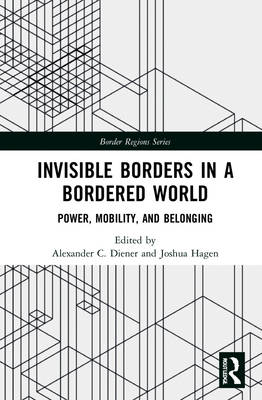
- Afhalen na 1 uur in een winkel met voorraad
- Gratis thuislevering in België vanaf € 30
- Ruim aanbod met 7 miljoen producten
- Afhalen na 1 uur in een winkel met voorraad
- Gratis thuislevering in België vanaf € 30
- Ruim aanbod met 7 miljoen producten
Invisible Borders in a Bordered World
Power, Mobility, and Belonging
Omschrijving
This book critically challenges the usual territorial understanding of borders by examining the often messy internal, transborder, ambiguous, and in-between spaces that co-exist with traditional borders. By considering those less visible aspects of borders, the book develops an inclusive understanding of how contemporary borders are structured and how they influence human identity, mobility, and belonging.
The introduction and conclusion provide theoretical and contextual framing, while chapters explore topics of global labor and refugees, unrecognized states, ethnic networks, cyberspace, transboundary resource conflicts, and indigenous and religious spaces that rarely register on conventional maps or commonplace understandings of territory. In the end, the volume demonstrates that, despite being "invisible" on most maps, these borders have a very real, material, and tangible presence and consequences for those people who live within, alongside, and across them.
Specificaties
Betrokkenen
- Uitgeverij:
Inhoud
- Aantal bladzijden:
- 286
- Taal:
- Engels
- Reeks:
Eigenschappen
- Productcode (EAN):
- 9780367370657
- Verschijningsdatum:
- 2/09/2022
- Uitvoering:
- Hardcover
- Formaat:
- Genaaid
- Afmetingen:
- 156 mm x 234 mm
- Gewicht:
- 612 g

Alleen bij Standaard Boekhandel
Beoordelingen
We publiceren alleen reviews die voldoen aan de voorwaarden voor reviews. Bekijk onze voorwaarden voor reviews.










